This Early American Cottage Loaf, made with a blend of grains, and formed into a unique shape, is reminiscent of the cottage breads the Pioneers used to bake in cast iron pots over the fireplace.
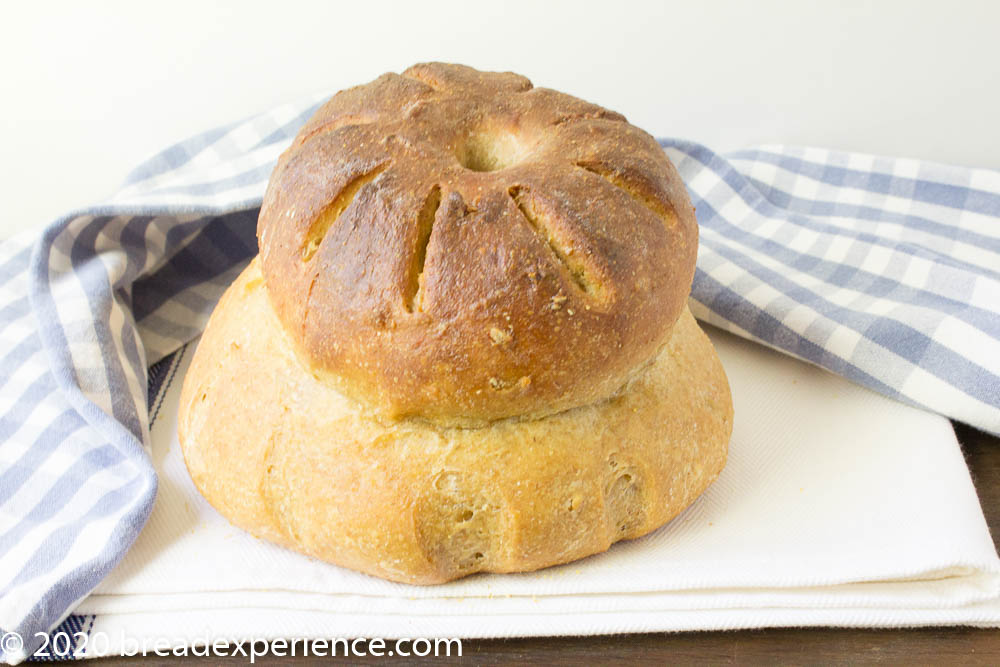
This comfy cottage loaf is the bread of the month for the Bread Baking Babes, and I’m delighted to be the host kitchen. I adapted this loaf from the recipe on the Red Star Yeast website.
I chose this bread because of its unusual shape, but also because it is made with a variety of grains to give it an interesting texture. It can be leavened with yeast or sourdough, depending on what you have on hand at the moment.
Since we’ve been experiencing a shortage of white flour and yeast over the past few weeks in the US, I thought it would be fun to recreate a bread that is made with a mix of grains and one that probably would’ve been made with sourdough given that dried yeast wasn’t available in Pioneer times.
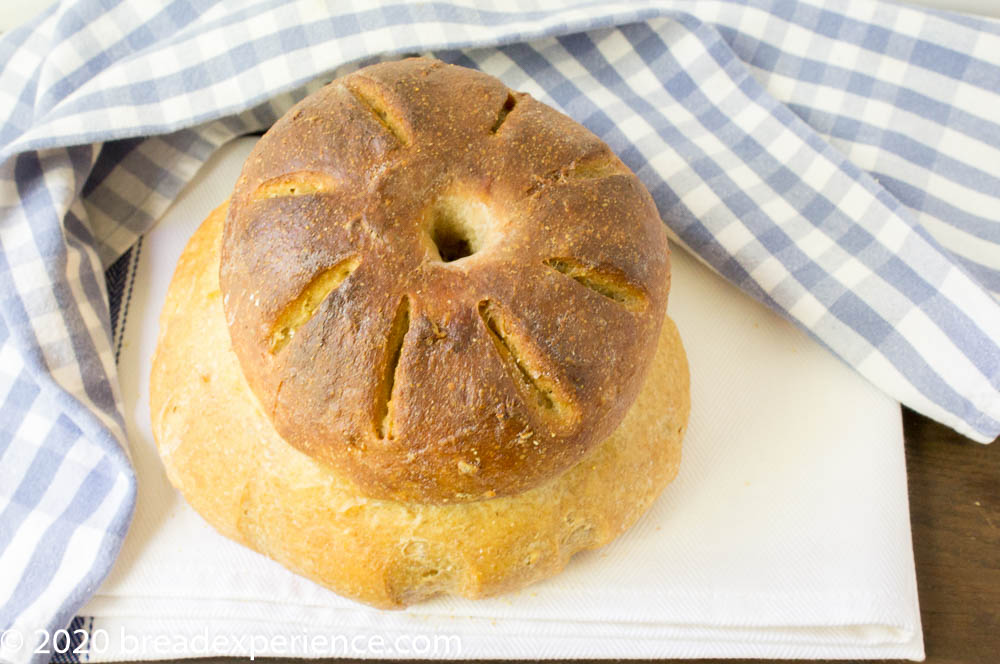
I’ve provided the instructions for making it with yeast or sourdough. Take your pick.
For the yeast version, I used Red Star Yeast’s suggested mix of grains but reduced the amount of dried yeast because I didn’t want it to overproof.
Based on some of the other recipes I looked at, I decided to use different proportions for each dough ball when shaping the loaf.
In addition, I incorporated the slashing technique referenced in several recipes. Slashing the dough helps the top dough ball stay on top of the bottom part, and helps the dough open up.
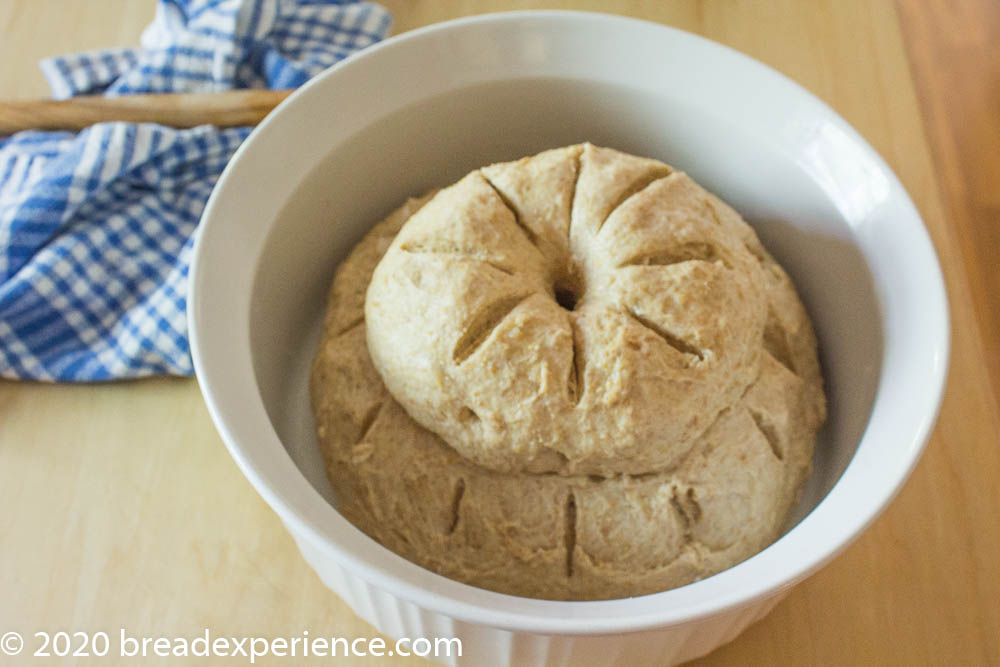
Using a casserole dish to bake the bread also helps to keep the top ball from falling over unless you make the top ball too big. Just be sure to grease the bottom of the casserole dish well because my first loaf stuck to the bottom of the dish.
The Red Star method called for a 1 ½ quart casserole dish. I didn’t think it would be big enough so I used a 2 ½ quart dish. It worked well. The larger casserole dish gave the loaf more room to expand and provided enough working space to slash the dough before baking.
All in all, I liked this bread. It is an easy and comforting bread for such a time as this. The mixture of grains gives it a wonderful flavor. It is surprisingly very moist.
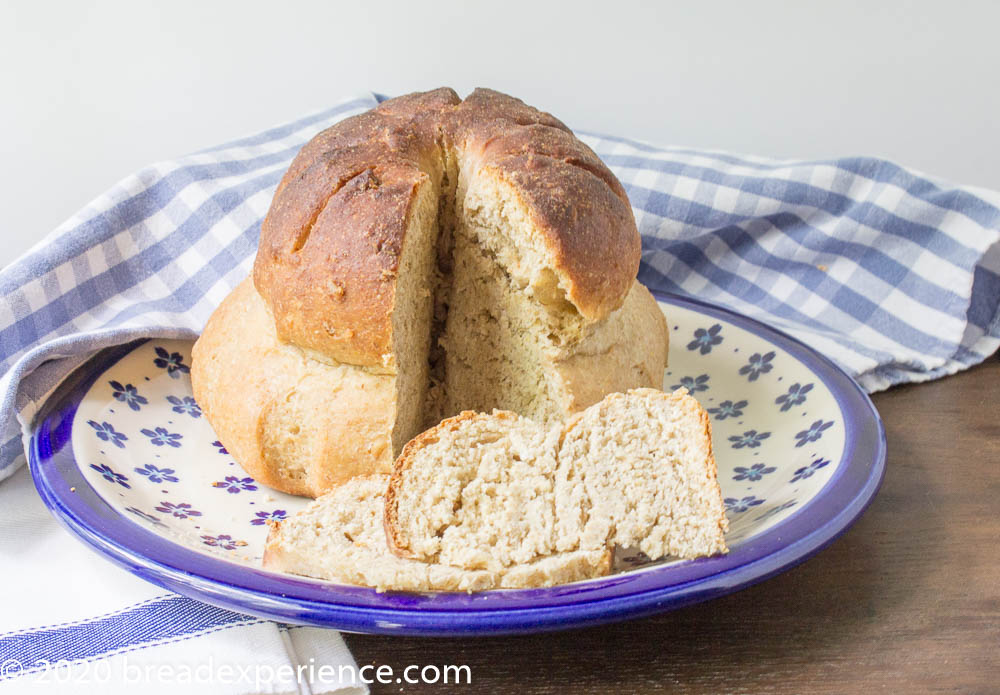
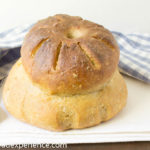
Early American Cottage Loaf
- Yield: 1 Loaf 1x
Description
This Early American Cottage Loaf, made with a blend of grains, and formed into a unique shape, is reminiscent of the cottage breads the Pioneers used to bake in cast iron pots over the fireplace.
Ingredients
Yeast:
- 1 1/4 cups water [280 grams]
- 2 TBSP oil [27 grams]
- 3 TBSP honey [63 grams]
- 2 1/4 cups (286 grams) bread flour
- 1 cup (120 grams) whole wheat flour
- 1 1/2 tsp salt [9 grams]
- 2 TBSP wheat germ [14 grams]
- 1/4 cup (30 grams) oat or wheat bran
- 1/4 cup (30 grams) oatmeal
- 2 TBSP corn meal [15 grams]
- 1–1/2 tsp instant dried yeast [6 grams]
Sourdough:
- 120 grams sourdough starter, fed & active
- 220 grams water
- 27 grams oil
- 63 grams honey
- 226 grams all-purpose or bread flour
- 120 grams whole wheat flour
- 9 grams salt
- 14 grams wheat germ
- 30 grams rolled oats (old fashioned)
- 30 grams oat or wheat bran
- 15 grams corn meal
Instructions
Yeast Method:
- In a large bowl, whisk together the dry ingredients, including the dried yeast and salt.
- In a separate container, mix together the water, honey, and oil. Pour the wet ingredients over the dry ingredients and mix until thorough combined. Knead until smooth and elastic.
- Cover. Let rise 45 min to 1 hour; perform stretch and fold; then let rise an additional hour. Perform the ripe test.
- Turn dough onto lightly floured surface; punch down to remove air bubbles. Cut off 1/3 piece of dough. Let dough relax for 15 minutes. My dough weighed 970 grams so I used 300 grams for the smaller piece and 670 grams for the larger piece.
- Shape each section into a round ball. Place larger ball in greased 2 ½ -quart casserole or soufflé dish. Using a sharp knife or lame, cut a cross, about 1 ½ inches across, in the top of the larger piece of dough.
- Brush the surface with water and then place the smaller piece of dough on top. Press through the center of both pieces of dough using the handle of a wooden spoon or your finger.
- Cover; let rise until indentation remains after lightly touching dough.
- Just before baking, stick handle of wooden spoon or finger into hole again. And, using a sharp knife or lame, make 8 long slashes around the top and 12 smaller slashes around the bottom of the loaf.
- Bake in preheated 375°F oven 35 to 40 minutes. Remove from dish; cool on rack.
Sourdough Method:
- Evening before mixing the dough, feed sourdough starter, let it proof for 8 hours. Optional, create a levain the night before with a tablespoon of starter + 50 grams flour and and 50 grams water to equal 120 grams and let it ferment overnight
- Morning next day, take out 120 grams starter and mix with other ingredients. Optional, use the levain you created the night before. Add the sourdough to the wet ingredients and mix with the dry ingredients.
- Let the dough bulk ferment for 4-6 hours, depending on the temperature in your kitchen.
- After 4 hours, proceed to shaping, or place the dough in the refrigerator overnight.
- Shaping method is the same as for the yeast version.
- Third Day: if you placed the dough in the refrigerator overnight, let it warm up to room temperature for a couple of hours before shaping the loaf and placing in the casserole dish.
- Cover; let rise until indentation remains after lightly touching dough.
- Just before baking, stick handle of wooden spoon or finger into hole again. And, using a sharp knife or lame, make 8 long slashes around the top and 12 smaller slashes around the bottom of the loaf.
- Bake in preheated 375°F oven 35 to 40 minutes. Remove from dish; cool on rack. Enjoy!
Notes
Adapted from: https://redstaryeast.com/recipes/early-american-cottage-loaf/
You can substitute Instant (fast-rising) yeast for Active Dry Yeast. Traditional methods- replace 1:1. Expect your dough to rise faster; always let your dough rise until ‘ripe’. Bread Machines- use ½ tsp Instant yeast (or ¾ tsp Active Dry yeast) per cup of flour in your recipe.
- Category: Mixed Grain Loaf
- Slash bottom loaf
- Use handle of wooden spoon
- Slash on bottom and top
- Bake in casserole dish
- Cool on rack
- Crumb shot
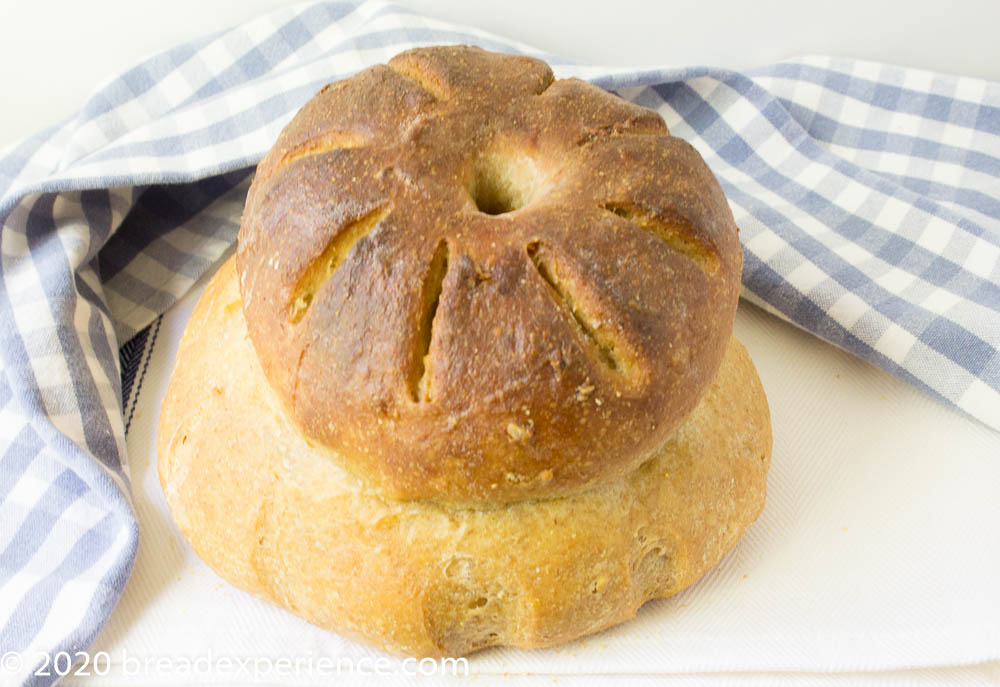
Bread Experience was the Kitchen of the Month. This was a fun loaf. Easy to make and delicious.
Bread Baking Buddies’ Cottage Loaves Roundup:
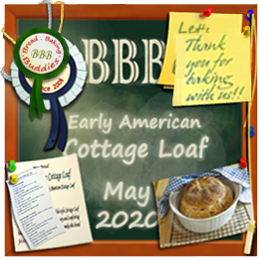
Two Bread Baking Buddies baked along with us in May. Thank you, Donna and Soepkipje for joining in the fun. Your loaves look good enough to eat! We hope you’ll join us again next time.
- Donna’s Cottage Loaf baked in a casserole dish
- Soepkipje’s Whole Wheat Spelt Cottage Loaf
Bread Baking Babes Cottage Loaves Roundup:
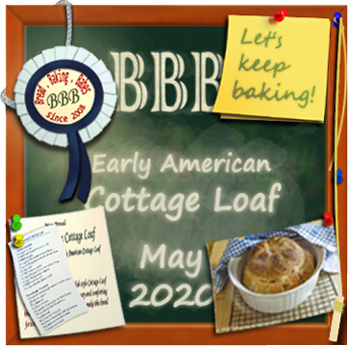
It’s fun to look at all of the breads together and to see the different yet similar interpretations. We look forward to seeing you next month!
- Aparna’s Cottage Loaf
- Karen’s Cottage Loaf
- Kelly’s Cottage Loaf
- Pat’s Cottage Loaf
- Elizabeth’s Cottage Loaf
- Judy’s Cottage Loaf
- Tanna’s Cottage Loaf
- Cathy’s Cottage Loaf
For more inspiration, and to find out what ingredients each Babe used, check out the links below:
- Bread Experience – Cathy (Host Kitchen)
- My Diverse Kitchen – Aparna
- A Messy Kitchen – Kelly
- Feeding My Enthusiasms – Pat
- Karen’s Kitchen Stories – Karen
- blog from OUR kitchen – Elizabeth
- Judy’s Gross Eats – Judy
- My Kitchen in Half Cups – Tanna
- Thyme for Cooking – Katie (roundup)
Remember, new recipes are posted every month on the 16th. Check the Bread Baking Babes Facebook group to see the participants’ baking results during that time.
Happy Baking!
Cathy
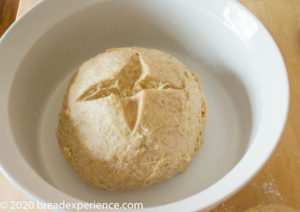
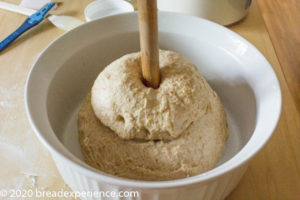
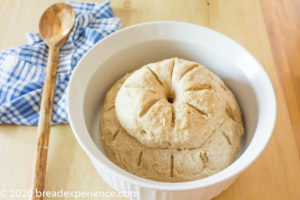
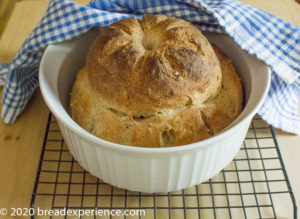
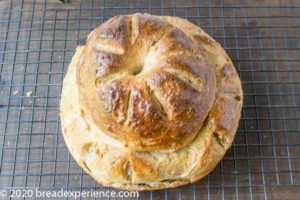
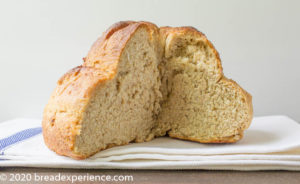
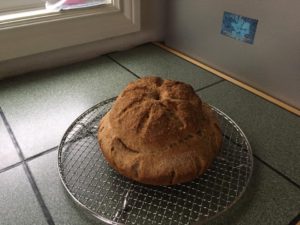
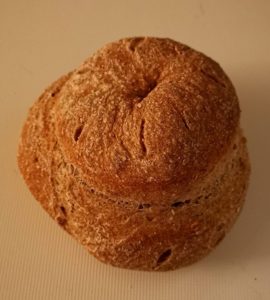

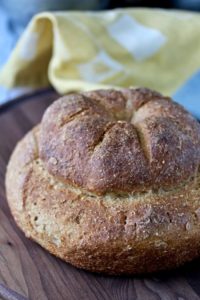
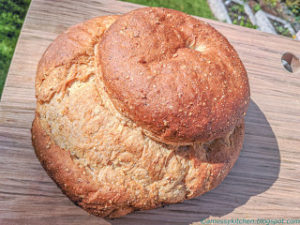
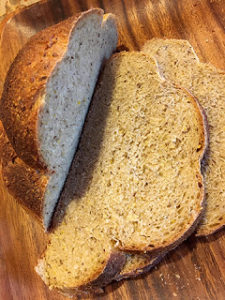
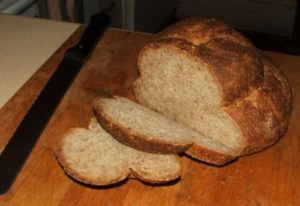
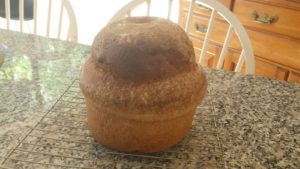
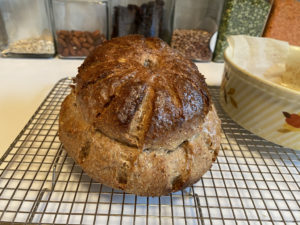
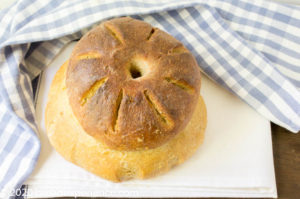
Kelly says
This is making the most fantastic toast! And we have enjoyed it fresh and with dinners as well. And poached eggs on toast of course, my daughter’s and my favorite breakfast. Really love the flavor and texture.
Cathy says
I’m so glad you are enjoying it! I was really surprised by how moist and flavorful it is given all of the grains.
Tanna says
Thank you so much for this lovely bread and the sourdough adaptation. We really enjoyed this one. Yes, I have long been attracted to this shape as well and it was fun.
Cathy says
My pleasure! There’s definitely something about the shape and the history of the cottage loaf that draws you in. The fact that it tastes great is a plus!
Karen says
Thank you for this. It was so easy but creative too. I enjoyed baking it.
Cathy says
I’m so glad you enjoyed it. Sometimes easy is good!
Judy says
This is a great bread with excellent texture and flavor. Thanks!
Cathy says
Thank you Judy! So glad you liked it.
Elizabeth says
Wow. We really like this bread, Cathy! You are brilliant to have suggested adding all the extra grains. And the shaping method was fun too. I know I said I probably wouldn’t do this shaping again, but I’m changing what’s left of my mind – this shape would be great for a festive table.
Many thanks again.
Cathy says
Thanks Elizabeth! Actually, it was Red Star Yeast that suggested all of the different types of grains, but I thought it was a fabulous idea given that white flour has been in short supply! I’m so glad you like the shape and are willing to try it again. I just love the shape – not sure why.
Katie Zeller says
I remember Red Star Yeast! What a great recipe. Everyone loved it – and I’m jealous.
Cathy says
It is a good recipe for such a time as this.
Aparna Balasubramanian says
I really enjoyed making this bread. Thank you for a lovely recipe.
Cathy says
Thanks Aparna! I’m so glad you enjoyed it!